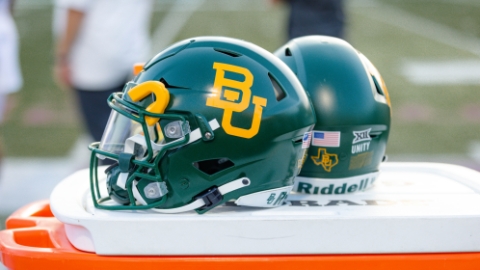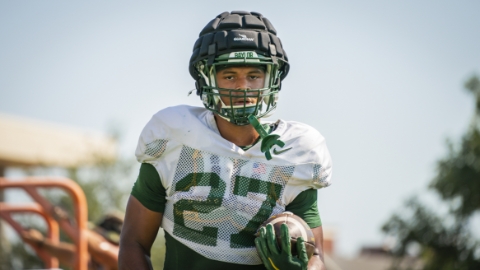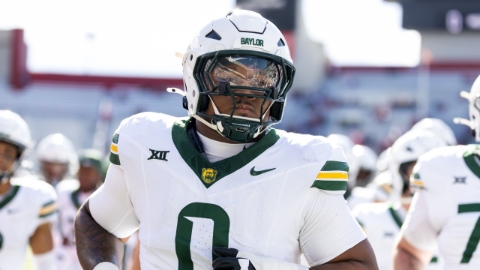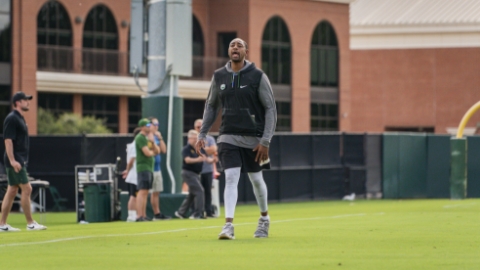Thank you.
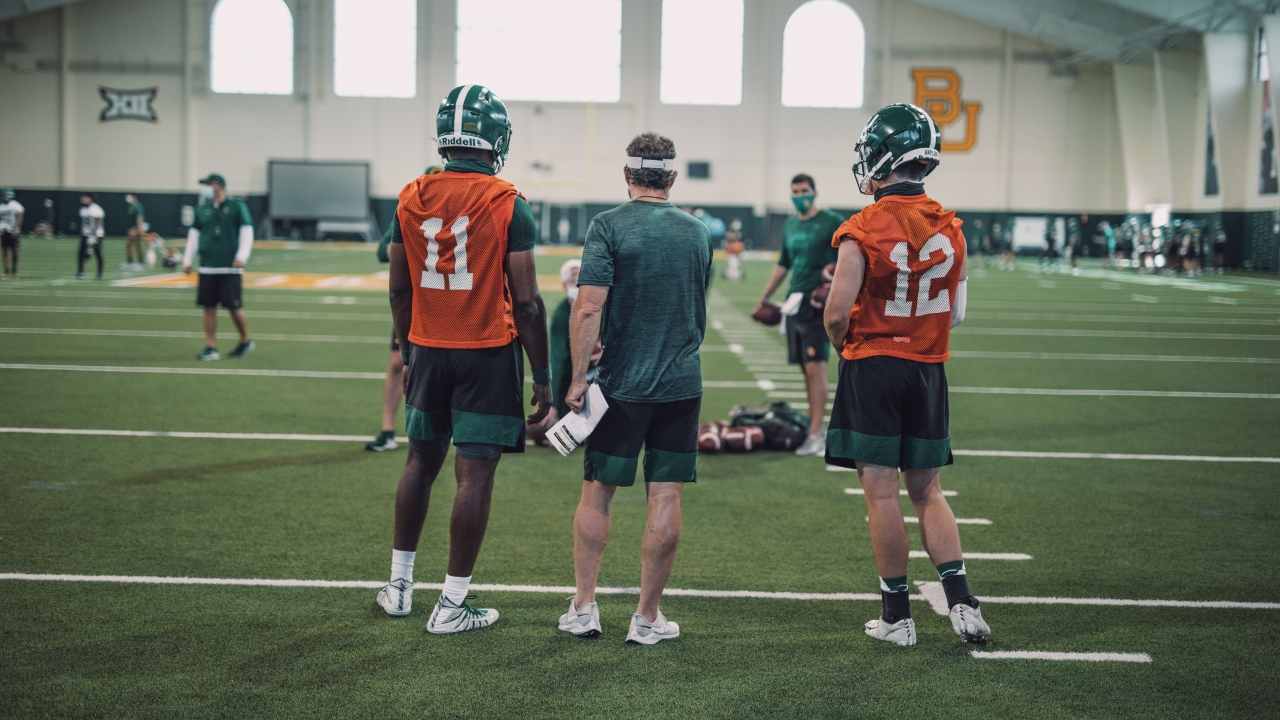
Try SicEm365 Premium 4 months for the price of 1!
Baylor’s New Offensive Scheme
Pt. 1: Philosophies, Formations & Personnel
Pt. 2: The Running Game
Pt. 3: RPOs & Screens
Pt. 4: Spread Passing Game
Pt. 5: Counterpunching
Part one of this multi-part series is free for all readers.
This is part one of my preview examining the offensive scheme of new Baylor offensive coordinator Larry Fedora. In this piece, I take a quick look at the formations, personnel groupings and impact of pre-snap motion. In later articles I’ll dive further into specific schemes and details. I previously published a statistical preview covering Fedora’s track record dating back to 2000 that gives a good background of how successful his offenses have been.
Larry Fedora has a strong reputation for coaching offense that goes back decades. His high-scoring attacks generated national attention at Oklahoma State, Florida, Middle Tennessee, Southern Miss and North Carolina. He also served on on Fisher DeBerry’s staff at Air Force after beginning his college career at Baylor, where he worked under Grant Teaff and Chuck Reedy. Fedora is also a former Texas high school coach. What can Baylor fans expect from Fedora’s offense?
Philosophy
Coach Fedora was asked specifically about his philosophy in a recent interview with SicEm365’s JD Pickell. His answer gave a bit to unpack.
"The philosophy of the offense, to give it to you in a big picture, is that we're going to be one-back. (We will) base out of one-back. Most of the time (we’ll be) 11 personnel, if we have that personnel, but we will be multi-personnel and we will be multi tempo. So we're going to spread the field and hopefully take advantage of what the defense gives us." - Larry Fedora
The line that stands out is: take advantage of what the defense gives us. This was readily apparent in the 2016 game against Florida State, from which I charted plays. In that game, he went from 74% run and RPO playcalls and 26% dropback plays during the first half to 39% and 61% in response to FSU offering less zone and more defenders in the box. Also, with the added box numbers, they hit more outside runs and RPO's in the second half, going from a 61% inside run percentage to roughly 44% in half two. The biggest thing I keep hearing Aranda say about Fedora (and Jorge Munoz) is that he does a good job building in counters to what a defense will try to do to stop him, and that his adapability lends itself to this.
In an older interview he mentioned how he adapted to his personnel at his first offensive coordinator job at Middle Tennessee State and it fits very much with the part of his answer I highlighted.
“Really, I went in there with the mindset that I’d do one of two things,″ Fedora said. “I wanted to (run) a no-huddle offense and do things that weren’t being done at the time; either that or we’d run the option like we did at the Air Force Academy. That (option) was a great equalizer and well-proven at the time. But we didn’t have the personnel (at MTSU) to do that. We had a quarterback in Wes Counts, who could throw a little bit. We had Kendall Newsome, Tyrone Calico and David Youell who could catch the football, and we were smaller up front on the offensive line. I just decided, ‘Let’s go with the no-huddle, up-tempo and do something totally different.’”
He’s unafraid to match what he does to his personnel, but I do think this quote is indicative that he wants the benefit of an uptempo spread while also utlizing some of the advantages that an option team gets from running the quarterback to gain an extra blocker, misdirection and pre-snap motion.
“One Back”
This offense is largely based around one tailback and four immediate passing threats. This is pretty standard for most spread teams. They may put in two or three tailbacks in a given formation but usually it’s just one.
“Probably 11 Personnel but will be multi-personnel”
Fedora has a long track record of using 11 personnel (one back, one tight end) and most of his offenses are based out of this look. However he isn’t going to force a square peg into a round hole. For instance, in his final year at Southern Miss, he used a lot more 10 personnel (one back, no tight end) than other years due to having a pretty good fourth receiver and having a tight end that was not a strong receiving threat. He also will mix in 12, 20, and 21 personnel situationally.
He likes to keep mostly the same personnel on the field and have players at tailback and tight end that can split out like a receiver. He frequently splits his tight ends out into the slot. When he has a dynamic player at that position like Eric Ebron he’ll even line them up as an outside receiver.
The primary skill positions I observed are:
X Receiver - Usually on the left sideline and is the classic split end, big solo matchup type.
Z Receiver - Usually on the right sideline and is usually the traditional flanker position.
A Receiver - This is the primary slot receiver position.
Y Receiver/Tight End - This is usually a tight-end type lining up inside or in the slot. Depending on personnel it may just be another slot type.
“Multi-Tempo”
Fedora likes to use fast tempo and go no-huddle. He won’t always go fast but he certainly wants to do it frequently and apply pressure on the defense to get lined up and get their assignments quicker than they want to. Keeping the opponent off balance by mixing up tempo seems to be the goal here.
“Spread The Field”
Fedora is a spread guy historically and you see it all over his formations. He spends a lot of time in the shotgun with the quarterback several yards back in the backfield, with the tailback beside him. He’ll also mix in the Pistol, where the QB is several yards back and the tailback is directly behind him.
He’ll frequently line up with three receivers split out and a tight end. Sometimes they’ll keep the tight end on the line like you see here.
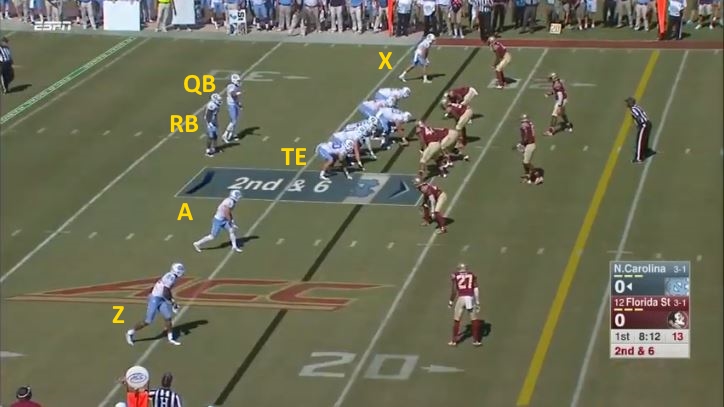
Other times they will keep that tight end offset in the backfield, which can provide some flexibility in how he’s used both as a blocker and receiver.
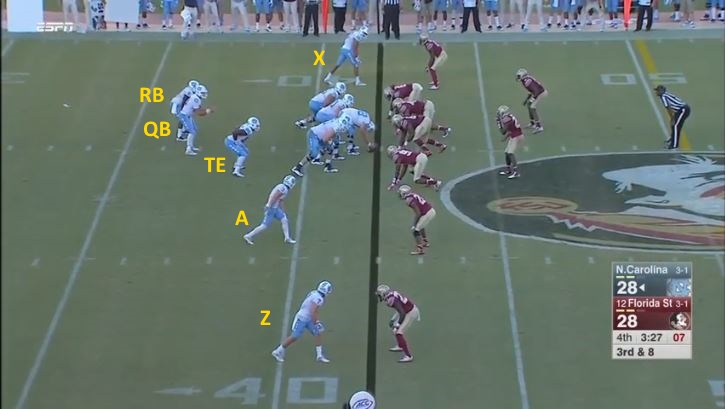
They will split four receivers out frequently both with 2x2 and 3x1 alignments. However, once again, the Y position is usually the tight end simply walking out into the slot rather than a substitution.

He also made a lot of use of a 20 personnel, two-back set like you see below, with both the A and the tight end as the slot receiver, depending on who he had available in a given season.
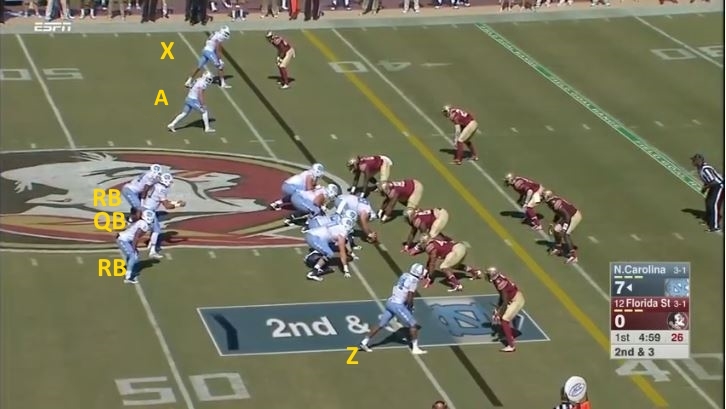
He’ll also split his tailbacks out and go empty with five receivers.
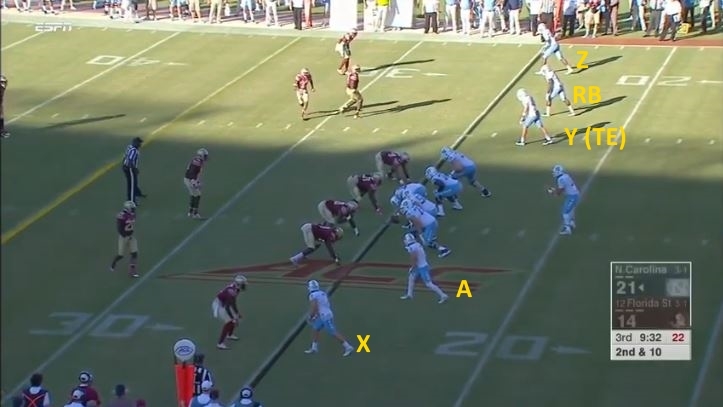
Fedora will occasionally stack his receivers behind each other. That forces defenses to modify coverages, which potentially makes their coverages more predictable. It also allows the deeper receiver to get a cleaner release off the line of scrimmage. Here is a look at a four-receiver trips formation with the slot receivers stacked.

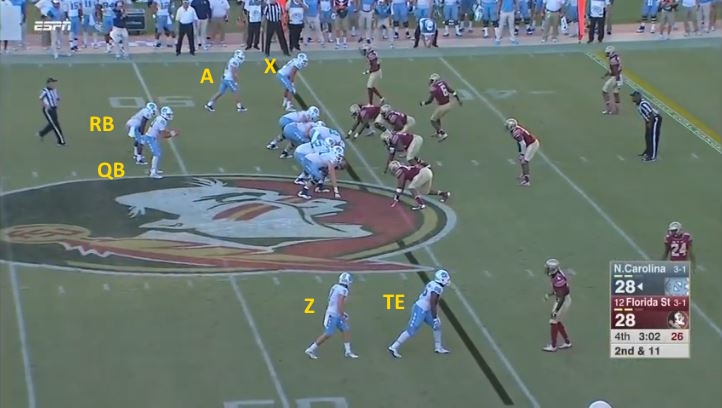
This offense will also use the Diamond formation, with three backs and the quarterback in the Pistol set. It’s the same look that that Air Raid teams like Oklahoma, West Virginia, and Oklahoma State used extensively in the early 2010’s. It allows for flexible run schemes while also creating intriguing matchups in the air. He’ll run it with 30 and 21 personnel.
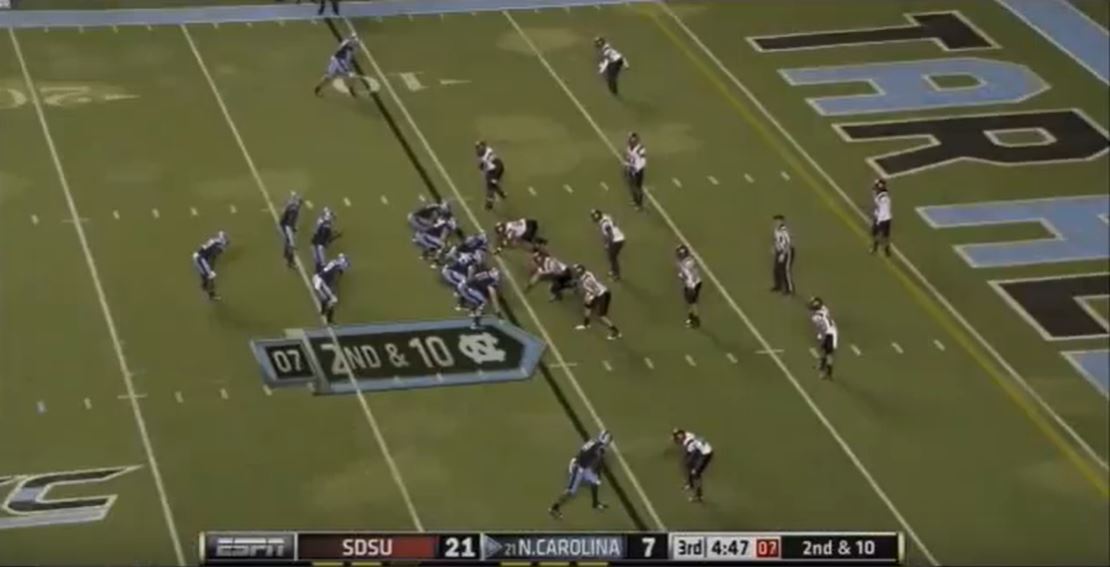
All of the previous formations seek to spread the field by alignment to create creases in the defense both on the ground and in the air. By forcing the defense to widen you force them to disclose part of how they intend to defend you, and you stretch their personnel and make them cover more ground.
However, that isn’t the only way Fedora wants to spread the field. He’s not married to spread alignments. He wants to use formations to get his guys in space regardless of the width of the alignment. At a Nike Coach of the Year Clinic, Fedora said “we may spread out the formation or we may condense the formation... then we spread them with speed and athleticism to create those seams.” “When we spread them with speed and athleticism (from a condensed formation) where they are dropping to has changed.” It also allows his offense to attack the edge more easily, with so many defenders packed inside.
Below you’ll see two quick passing concepts where the altered drop locations led to easy first downs. You also see one inverted power read where his offense was able to get outside on the ground.
Motion
One thing he did not specifically highlight—but I saw a lot of it on film—is pre-snap motion. He will frequently use it to offer a different formation to a defense and make them adjust. It’s another thing that keeps things simple for his guys while making the defense prepare that much harder. He uses this to open up things directly for the man in motion and to use him to open someone else up.
Here are two examples I saw frequently, although I also saw motions like sending the tailback towards the sideline and motioning wide receivers inside or outside of each other for subtle advantages on routes.
Orbit Motion
Fedora will motion a receiver in an arc behind the formation to attack the other side of the formation. Here, Florida State does not adjust and we see UNC get an easy pickup to the outside.
It’s also a tactic he likely picked up during his time at Air Force where some very similar concepts were used.
It can also be effective opening up passing lanes, as you see on this play action pass.
Jet Motion
He also uses the threat of the Jet sweep in a similar way. Here, Florida State doesn’t adjust again and, whether it was pre-determined playcall or whether the quarterback had the freedom to read the unblocked defensive end, it resulted again in Florida State giving up easy yards.
However, when they do account for him? Oftentimes it just opens up someone else like.
Overall it’s a very dangerous scheme to defend. His personnel will usually be very fast and he will use alignment, motion, space and tempo to get a defense off balance.
Questions and Answers
Has Fedora had an offense with as much speed as he inherits at Baylor?
I think Baylor probably has more pure track speed at receiver and tailback than most of the offenses he’s had. That isn’t to say his prior tailbacks or wideouts weren’t capable, but I don’t think Baylor has the guys at tight end to exceed what he’s had.
What offensive position on offense might be toughest to fill?
I don’t think Baylor has guys like Eric Ebron, Kendrick Singleton,or Shawn Nelson at tight end that could really be the speed and size mismatch that Fedora likes to utilize. To say he’s had some decent speed at tight end is pretty fair. Below is a look at the primary starters he’s had since 2005 and only one (who had a slot receiver take many of his snaps) wasn’t really able to threaten in the passing game.
How does this compare to the Briles offense?
There are some overlapping tactics with certain run schemes, RPO schemes and deep play action concepts. But generally ... no, this is a more diverse scheme in terms of blocking schemes, formations and routes. I’ll dive into the particulars in future breakdowns.
It also isn’t going to spread itself as wide by alignment. The horizontal lines in this picture show the differences in alignment for a typical 2x2 doubles formation with four receivers snapping the ball on the near hash. The Briles offense placed guys much further outside, especially so on the wide side of the field, whereas UNC only had one guy outside the far hash. Baylor not only had two there, but one was past the numbers.
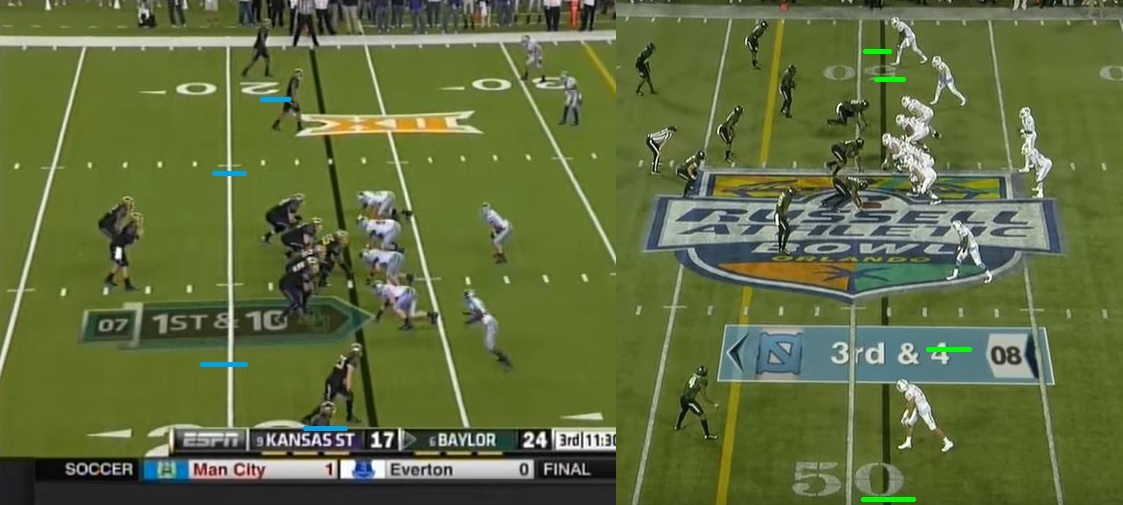
Will we have higher yards per carry and yards per reception than before? If so, will it come from big plays or more consistent plays (or both)?
That is more of a function of long plays so it’s going to be hard to outpace the high 20+ yard play percentage Baylor had through the most of 2019. However I expect him to get guys in space for big plays frequently and I expect to keep the chains moving.
What will be the biggest change from 2019?
While both schemes adapted to what they were given, Rhule’s offense began with the idea of establishing the run and then going from there. I sense Fedora is more focused on taking advantage of what is open than the prior staff was.
Don’t miss part two, coming soon!
Follow @Baylor_S11 on Twitter!
